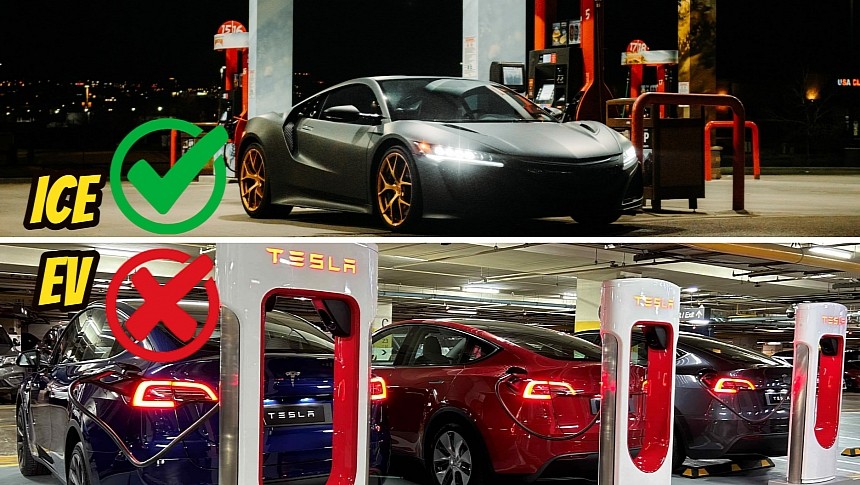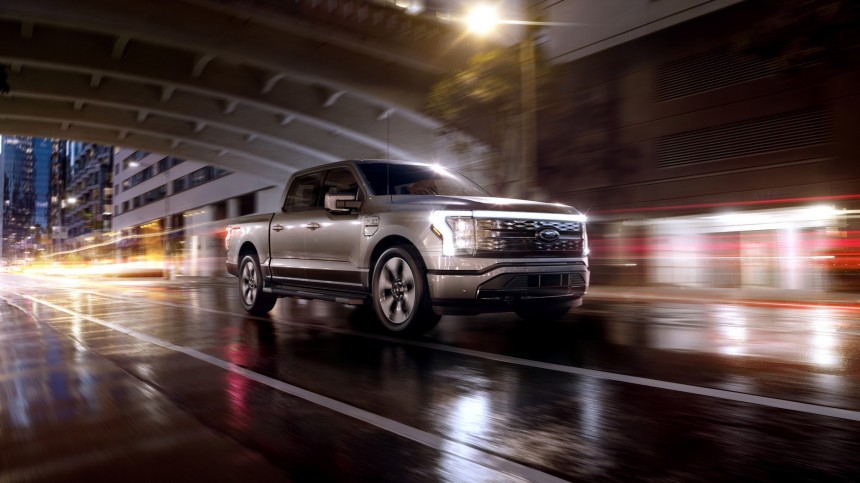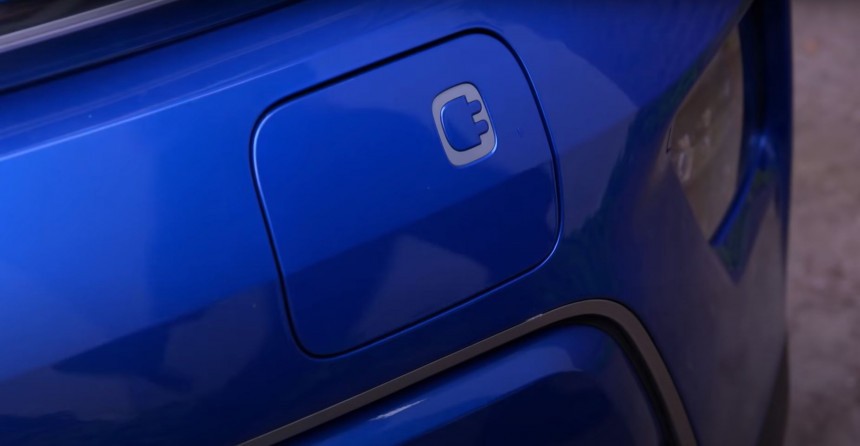There's no denying that all-electric vehicles, especially battery-electric ones, are the future of the automotive industry. Everyone's slowly yet surely heading in that direction. But you might want to give buying an EV a second thought. A Harvard study claims you're not positively impacting the environment by going with an EV and not driving it often.
A Harvard graduate named Lucas Woodley couldn't find a satisfying answer concerning the federal EV tax credit and these perks' positive outcomes for the climate. So, he did what anyone looking for clarification would do.
The young man spent over two years researching electric vehicle ownership, the incentives for buying them, and their impact on the environment. Because, after all, these types of cars (including plug-in hybrids) are considered greener, hence the "clean vehicles" moniker given to them by the federal authorities.
The fiscal advantages currently available to qualifying Americans who plan on taking delivery of an eligible battery-electric (BEV) or plug-in hybrid vehicle (PHEV) are as follows:
On top of the updated federal EV tax credit, Americans living in certain states can take advantage of similar incentives or rebates. Someone from California, for example, got a Tesla Model 3 for the low price of $13,620 sans tax and freight.
California, for example, understood that it should do something in this regard and created the Clean Cars 4 All program that allows people earning 300% of the Federal Poverty Level or less to get a hefty discount. Initially, it worked in only five so-called "air districts," but the Golden State is expanding it to everyone.
The Harvard graduate now explained in layman's terms for the Harvard Gazette that the wrong type of drivers usually buy BEVs. These people use them sparingly, leading to their carbon footprint remaining big. Thus, any American who keeps their car in the garage more than on the road would have a lessened environmental impact by buying a gas-powered vehicle.
Woodley says high-voltage batteries carry a sizeable portion of the emissions associated with the manufacturing process. Mining and transportation, for example, play a significant role in this equation. To make sure your non-luxury BEV has a positive outcome for the climate, you need to drive it at least 28,069 miles before seeing any offsetting. That figure can grow to 68,160 miles depending on the energy storage unit's size and manufacturing location.
The man said that many BEV owners (be them individuals or families) get rid of their EVs before achieving such mileage. That includes those who sell them and people who must total them after a crash.
Moreover, some automakers started a narrative saying that a BEV is an excellent second car for trips done primarily in urban areas. Remember the BMW i3? Yeah...
Technically, they weren't wrong. Driving a zero-tailpipe emission car is better for the local environment. But on the grand scale of emissions-related things, you're not living a green lifestyle by owning two cars.
He also underlined that incentives for BEVs are better suited for low- and middle-income buyers who tend to drive more than other Americans. On average, they also own one car, which is a good thing sustainability-wise.
Another research Woodley finished this year said that the federal government should aim the incentives at those who truly use their BEVs and gave as an example ridesharing professionals.
These findings are nothing new for those interested in shrinking their carbon footprint. Last year, we told you about a report that said EVs and internal combustion engine-powered cars will reach pollution parity only after the unit with no exhaust system travels at least 21,000 miles. From there onwards, the fossil fuel-hungry vehicle becomes a net pollutant and is worse for the environment.
Another research into EV ownership coming from Sweden also said that instead of subsiding EVs, national and local governments would do better by incentivizing the acquisition of electric buses.
We can now confidently say that something that cannot be taken away from EVs right now is their major advantage of being absolutely fantastic for local environments. Disregard the carbon associated with producing a battery-electric vehicle for a second, and you'll immediately notice how it's better for communities everywhere. Not burning fossil fuels for mobility does wonders for the air people breathe.
Plus, the absence of controlled explosions under a car's hood and the elimination of noises from loud vehicles or motorcycles with modified exhausts also contribute to calmer surroundings.
Add that EVs don't use their brakes as often as a gas-powered vehicle because of the motor's energy recovering mechanism, and the net benefit is clearly there. Tires might be a concern because these types of cars weigh more on average, but that will also be fixed at some point.
But, at the same time, we must admit that some other local environments, like Thacker Pass, must be sacrificed for all those other places that need cleaner air. There's no hiding it. For years, cars have been polluting the entire planet. Now, EVs bring us a chance to ruin only some parts of the world, mostly uninhabited by humans.
Finally, don't worry about the circular economy – scrapped EVs will gradually become a more important part of the recycling process. That includes batteries too, as proven by BASF in Europe or Ascend Elements in Georgia, US.
The young man spent over two years researching electric vehicle ownership, the incentives for buying them, and their impact on the environment. Because, after all, these types of cars (including plug-in hybrids) are considered greener, hence the "clean vehicles" moniker given to them by the federal authorities.
The fiscal advantages currently available to qualifying Americans who plan on taking delivery of an eligible battery-electric (BEV) or plug-in hybrid vehicle (PHEV) are as follows:
- $3,750 for BEVs and PHEVs meeting the critical minerals requirements;
- $3,750 for BEVs and PHEVs meeting the battery components (i.e., anode, cathode) requirements;
- $7,500 for BEVs and PHEVs that meet both requirements;
- $4,000 (or 30% of the sale price) for a used BEV, PHEV, or FCEV that costs $25,000 or less.
On top of the updated federal EV tax credit, Americans living in certain states can take advantage of similar incentives or rebates. Someone from California, for example, got a Tesla Model 3 for the low price of $13,620 sans tax and freight.
Good intentions, less than optimal execution
Woodley's and his colleagues' findings were published in Nature Sustainability last year. That research claimed that the EV tax credit was more suited for affluent buyers who might not have needed it. On average, the document said a BEV was $12,000 more expensive than a gas-powered equivalent. That still applies today, but the price difference may be less noticeable due to inflation and aggressive dealership pricing.California, for example, understood that it should do something in this regard and created the Clean Cars 4 All program that allows people earning 300% of the Federal Poverty Level or less to get a hefty discount. Initially, it worked in only five so-called "air districts," but the Golden State is expanding it to everyone.
The Harvard graduate now explained in layman's terms for the Harvard Gazette that the wrong type of drivers usually buy BEVs. These people use them sparingly, leading to their carbon footprint remaining big. Thus, any American who keeps their car in the garage more than on the road would have a lessened environmental impact by buying a gas-powered vehicle.
Woodley says high-voltage batteries carry a sizeable portion of the emissions associated with the manufacturing process. Mining and transportation, for example, play a significant role in this equation. To make sure your non-luxury BEV has a positive outcome for the climate, you need to drive it at least 28,069 miles before seeing any offsetting. That figure can grow to 68,160 miles depending on the energy storage unit's size and manufacturing location.
EV owners should listen to Rihanna's advice and just drive. For environment's sake, of course
His research concluded that, on average, BEV owners must clock at least 55,749 miles without needing a battery replacement to truly contribute to the fight against global warming.The man said that many BEV owners (be them individuals or families) get rid of their EVs before achieving such mileage. That includes those who sell them and people who must total them after a crash.
Moreover, some automakers started a narrative saying that a BEV is an excellent second car for trips done primarily in urban areas. Remember the BMW i3? Yeah...
Technically, they weren't wrong. Driving a zero-tailpipe emission car is better for the local environment. But on the grand scale of emissions-related things, you're not living a green lifestyle by owning two cars.
He also underlined that incentives for BEVs are better suited for low- and middle-income buyers who tend to drive more than other Americans. On average, they also own one car, which is a good thing sustainability-wise.
These findings are nothing new for those interested in shrinking their carbon footprint. Last year, we told you about a report that said EVs and internal combustion engine-powered cars will reach pollution parity only after the unit with no exhaust system travels at least 21,000 miles. From there onwards, the fossil fuel-hungry vehicle becomes a net pollutant and is worse for the environment.
Another research into EV ownership coming from Sweden also said that instead of subsiding EVs, national and local governments would do better by incentivizing the acquisition of electric buses.
Looking at the bigger picture
We at autoevolution have also followed the story of EVs and witnessed how narratives changed over the years. From electric cars being touted as the ultimate solution to our climate problems to excessive implementations like the GMC Hummer EV and the argument that a zero-tailpipe emission car is the better choice because it's more silent and much faster… We've seen it and reported about it all.Plus, the absence of controlled explosions under a car's hood and the elimination of noises from loud vehicles or motorcycles with modified exhausts also contribute to calmer surroundings.
Add that EVs don't use their brakes as often as a gas-powered vehicle because of the motor's energy recovering mechanism, and the net benefit is clearly there. Tires might be a concern because these types of cars weigh more on average, but that will also be fixed at some point.
But, at the same time, we must admit that some other local environments, like Thacker Pass, must be sacrificed for all those other places that need cleaner air. There's no hiding it. For years, cars have been polluting the entire planet. Now, EVs bring us a chance to ruin only some parts of the world, mostly uninhabited by humans.
Finally, don't worry about the circular economy – scrapped EVs will gradually become a more important part of the recycling process. That includes batteries too, as proven by BASF in Europe or Ascend Elements in Georgia, US.























